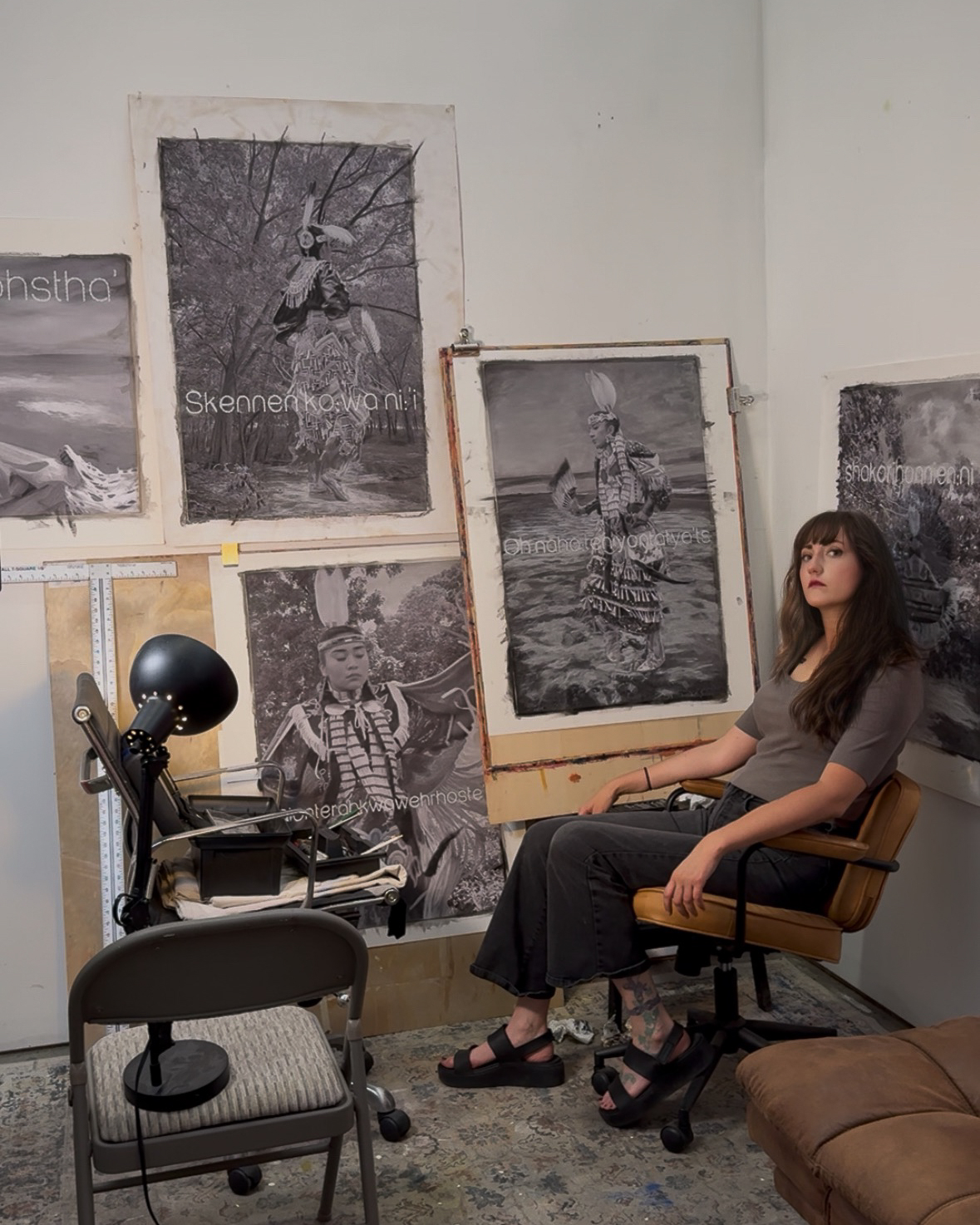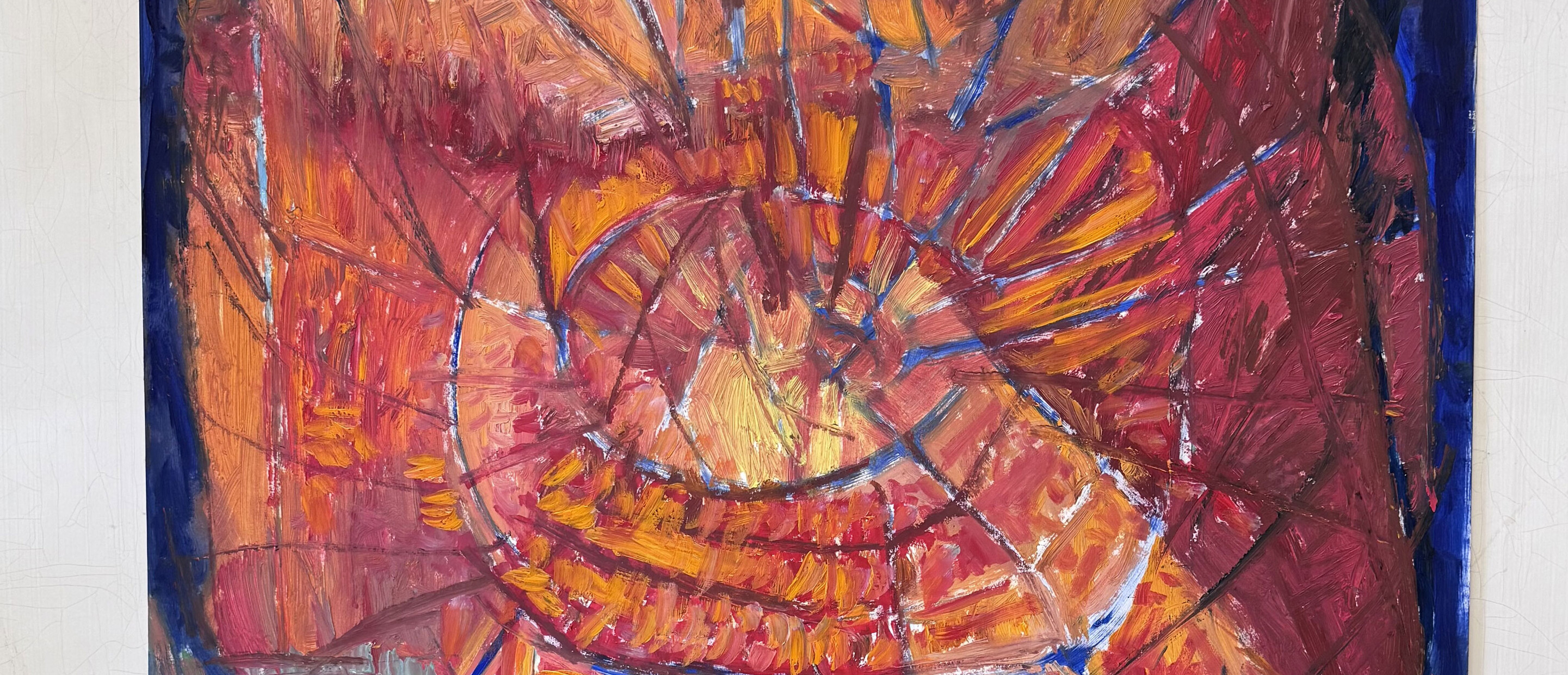 Brittany Kiertzner is a multidisciplinary fine artist and an enrolled member of the Saint Regis Mohawk Tribe, Iroquois Nation. She holds a BFA from California State University, Fullerton. She has completed artist residencies at institutions such as Craft in America Center and Wonzimer WARP Los Angeles. Her work has been the subject of solo exhibitions and numerous group exhibitions nationally since 2007 at locations such as the Benton Museum of Art at Pomona College, CAMP Gallery (Miami), and Wonzimer Gallery. She has appeared in publications such as Artillery, Young Space, and 13ThingsLA by Shana Nys Dambrot. Her work is in the permanent collection of the Sasse Museum of Art (Pomona, CA) and in private collections nationally. She manages her studio in Los Angeles at Wonzimer.
Brittany Kiertzner is a multidisciplinary fine artist and an enrolled member of the Saint Regis Mohawk Tribe, Iroquois Nation. She holds a BFA from California State University, Fullerton. She has completed artist residencies at institutions such as Craft in America Center and Wonzimer WARP Los Angeles. Her work has been the subject of solo exhibitions and numerous group exhibitions nationally since 2007 at locations such as the Benton Museum of Art at Pomona College, CAMP Gallery (Miami), and Wonzimer Gallery. She has appeared in publications such as Artillery, Young Space, and 13ThingsLA by Shana Nys Dambrot. Her work is in the permanent collection of the Sasse Museum of Art (Pomona, CA) and in private collections nationally. She manages her studio in Los Angeles at Wonzimer.
What does it mean to make drawings, especially over other art forms?
For me, making drawings feels like a deeply intentional and meditative act. It’s a way of exploring ontological meaning through gesture and repetition. I’m particularly inspired by symbols we use to represent metaphorical existence like the Onkwehonwehne’ha (the wampum circle). This object of the Iroquois nation serves as a sacred democratic symbol exchanged between chiefs and clans. It represents peace, coexistence, and the weight of collective decision-making. In my pastel works on paper, I try to explore how these powerful symbols can be reimagined through nonrepresentational, idealist critique. Each line I draw is like a hand holding another—every tangent tightly bound to the next—forming a circle that becomes a meditation in itself, one that doesn’t weaken. The Iroquois idea of Teiotiokwaonhaston—that this circle will always be preserved—guides my process, as I attempt to give form to the intangible connections that bind us as human beings.
What kind(s) of rituals are embedded in your drawing practice?
Ritual is central to my drawing practice, and it reveals itself through the rhythmic use of oil sticks and soft pastels. I approach the surface with repetition and intention, layering and smearing pigment as a kind of physical meditation. Each gesture becomes a ritual act—blending, pressing, pulling color across the paper—to create tangent lines that hold and meet each other. This process isn’t just about form but also about connecting emotionally and spiritually through movement. The ritual lies in the return to this act, again and again, building meaning through rhythm, touch, and the quiet insistence of mark-making.
In what ways does Los Angeles influence (or not) your approach to drawing?
Working in Los Angeles has influenced my approach to drawing, especially through my experience at Wonzimer Studios, where I’m surrounded by peers like Khang Bao Nguyen, Jess Goehring, and Cheyann Washington. Collectively, we often explore themes of nonobjectivity and intericonicity in ways that challenge the ethos of the Transcendental Painting Group of the 1940s. This environment pushes me to think critically about abstraction and its potential for spiritual resonance. My practice, however, still remains rooted in Mohawk Iroquois traditions—specifically the craft of splint basket weaving and embroidery. I reinterpret these traditional forms, weaving together both literal and metaphorical threads to build a visual language that connects ancestral symbolism with present-day conceptual frameworks. I view my work as a form of cultural preservation and resistance, particularly in the face of language loss and forced assimilation experienced by Indigenous communities such as mine. My aim is to continue to recontextualize Indigenous knowledge systems, offering a body of work that is as much about remembrance as it is about revival.
